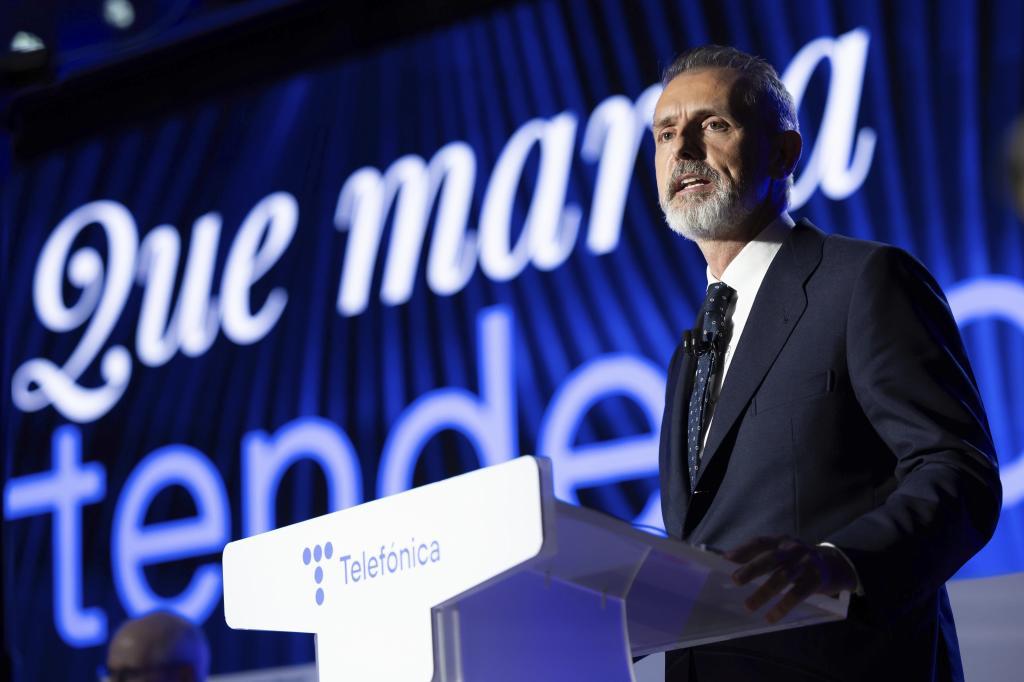Telefónica has taken time to make effective the words of its president, Marc Murtra, at its first shareholders' meeting. Just four days after consolidating its focus on Europe and emphasizing the goal of exiting Latin America, the group closed the sale of its Peruvian subsidiary for ¤900,000 and assumed the debts of the company, in bankruptcy.
In just four months under Murtra's presidency, Telefónica has divested its operations in Colombia, Argentina, and Peru, companies that together employed around 20,700 workers, 20% of the total group, according to its annual report, and had regularly incurred million-euro losses in recent years. In 2024 alone, ¤1.327 million in the case of Argentina, ¤872 million in Peru, and ¤41 million in Colombia. In total, the Spanish company will receive ¤1.55 billion, ¤1.19 billion of which comes from the sale of the Argentine business.
The performance of these Latin American markets has been a burden for Telefónica for years, both in the stock market and operationally, as despite streamlining its operations, the challenging macroeconomic environment in some countries, the weakness of their currencies, or market dynamics had turned these three geographies into a headache for the group's management, forced to make almost biannual accounting write-downs.
In the case of Colombia, the sale to the Millicom group still needs to be officially closed, but in the other two markets, Telefónica has signed and closed the deals simultaneously, something very unusual and indicating that the Spanish operator has foregone seeking a higher price to avoid regulatory risks or negative repercussions that could arise between the announcement and closing of the deal (or potential blockage as in the case of Argentina).
This swift exit has been welcomed by the market in the case of Peru, as shares rose by 3.14%, slightly above the Ibex 35 average in a transaction approved by most analysts. "The sale price is in line with the difficult situation Telefónica Peru is going through. This deal allows Telefónica to significantly reduce its risk," stated Renta 4.
"It's not just that Telefónica is selling its operations in Peru, but in the worst-case scenario, it will do so at a higher price than we valued it. However, we believe that the execution of its Hispam exit strategy is more important and Peru was by far its worst market in 2024," noted Banco Santander.
The fact that a price of ¤900,000 is celebrated in the market speaks volumes about the problem that the Peruvian market was posing for Telefónica. The group still held market shares above 30% in broadband, mobile, and pay-TV, where it is the country's largest operator. However, the regulatory burden of its ongoing tax disputes with the country's government had turned the market into a bottomless pit of provisions and adjustments, ultimately damaging the group's competitiveness with endless processes that increased interest payments. The company, which has provisioned over ¤950 million for these disputes, paid ¤350 million this year for its corporate taxes in 2000 and 2001 and is engaged in an international arbitration process with the country's government. A good summary of the situation is that out of the 123 pages in Telefónica Peru's 2024 annual report, 60 are dedicated to detailing these conflicts.
Now, closing this chapter not only frees the group to focus on Europe but also shifts attention to other markets that could be up for sale. Chile, where a business impairment was also recorded this year, Mexico, Ecuador, Uruguay, and Venezuela, with Venezuela being considered the most challenging to sell, although it was the market that yielded the highest profit among those mentioned.
Overall, these markets, with their issues, do not have the severity of Peru, especially in the case of Uruguay, which has already had interested buyers, and through which the group could continue to generate cash to implement that "iron financial discipline" promised by Murtra at the last meeting before consolidating in Europe, the group's new top priority.
